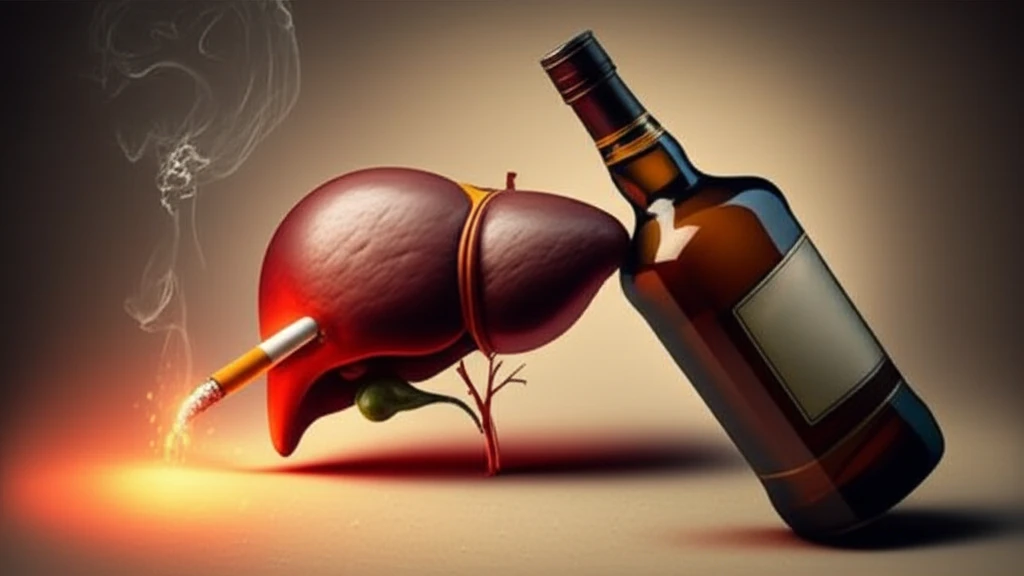
Alcohol, Smoking, and Your Liver: What You Need to Know
"Uncover the synergistic dangers of alcohol and smoking on liver health, and practical steps you can take to protect yourself."
If you're a gastroenterologist, you're likely to encounter patients with alcoholic liver disease (ALD). The spectrum of this disease is wide ranging; patients may have mild elevations in liver transaminases, or end-stage cirrhosis and hepatocellular carcinoma. Proper patient care is critical to increase survival. This review covers aspects of ALD, including alcoholic hepatitis and hepatocellular carcinoma.
Alcohol consumption is widespread. A large percentage of US citizens report lifetime consumption of alcohol, with a significant amount of pure alcohol consumed yearly. Unfortunately, this leads to many deaths annually in the US. Alcoholic liver disease (ALD), resulting from alcohol consumption, is a major cause of cirrhosis.
Alcohol is primarily metabolized into acetaldehyde. While the CYP2E1 system typically handles a small part of this process, it can be induced by its substrates and greatly upregulated in those who consume large amounts of alcohol. CYP2E1 induction leads to increased production of reactive oxygen species and DNA damage, increasing the risk of cancer. Acetaldehyde, an intermediate product of ethanol metabolism, is highly reactive and carcinogenic, contributing significantly to alcoholic liver disease. Since the enzymes involved are highly expressed in hepatocytes, the most harmful effects of ethanol are seen in the liver.
Understanding the Risks: How Alcohol and Smoking Impact Your Liver

Alcohol is an established risk factor for cirrhosis. Current recommendations usually set a "safe" limit for alcohol consumption at around 30 g per day for men and 20 g per day for women. However, evidence suggests these cut-offs may be too high. Inter-individual differences in hepatic sensitivity to alcohol likely play a role in the risk of developing cirrhosis.
- Binge-drinking: Consuming more than five units of alcohol at the same occasion for men and four for women is linked to a higher risk of ALD and mortality.
- Drinking outside of meals: Drinking outside of meals increases risk for ALD compared to drinking only at mealtimes.
- Genetics: Gender and genetic factors also play a role. Women are at higher risk for developing ALD, and genetic mutations in the PNPLA3, TM6SF2, and MBOAT7 genes are strongly associated with ALD and alcoholic cirrhosis.
Protecting Your Liver: Key Steps for a Healthier Future
The first and most crucial step in protecting your liver is reducing or eliminating alcohol consumption. Abstinence has been shown to improve prognosis, even in end-stage liver disease. Assisting patients in achieving abstinence is paramount, and requires a multi-disciplinary approach involving gastroenterologists, addiction specialists, and other healthcare professionals.
Quitting smoking is another vital step. Smoking compounds the risk of liver damage and HCC. Patients with chronic liver diseases should be informed of the increased risk, and offered appropriate counseling and/or therapies to help them quit.
Understanding your individual risk factors is also key. Regular check-ups and screenings, especially for those with cirrhosis, can help detect liver cancer early, when curative therapies are still an option. By taking these steps, you can significantly reduce your risk and improve your long-term liver health.
